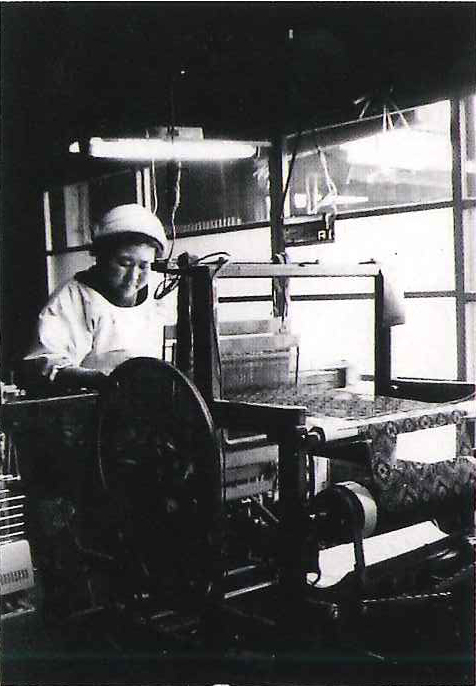
町制施行を祝う記念式典の様子
(昭和15年)
The photo shows the commemorative ceremony to celebrate the town organization establishment
(1940) |
| |
| 大正時代になると、多摩各地で鉄道の建設が盛んとなり、昭和9年、瑞穂町域においても八高線が全線開通し箱根ヶ崎駅が運用を開始した。瑞穂町の交通・運輸の中心となる。 | In the Taisho era, railway construction was undertaken in various places throughout Tama. In 1934, the Hachikō Line opened as a completed line, and in the Mizuho area the Hakonegasaki Station also started the operation. It became the center of traffic and transportation in Mizuho. |
| 昭和15年、箱根ケ崎村外三ケ村組合は町制を施行し、東京府知事より町名を拝命し、西多摩郡瑞穂町となる。 | In 1940, the Association of Hakonegasaki village and three other villages was established under the town system, and became Mizuho Town of Nishitama-gun District, as designated by the Governor of Tokyo Prefecture. |
| 太平洋戦争中の昭和18年には、東京府は都制を施行し、瑞穂町も東京都の所管となった。 | In 1943 during World War II, the Tokyo Prefecture established the metropolitan government system, and Mizuho also became a jurisdiction under the Tokyo Metropolitan Government. |
| それまで、多摩一帯では綿織物が生産されていたが、大正年間に綿織物の人気が低迷し、逆に都市部での絹織物の人気が高まると、現武蔵村山市で、絹織物の村山大島紬が開発され人気となった。そのため、隣接する瑞穂町域でも絹織物生産が盛んとなった。村山大島紬は家内制手工業形態で生産されたため、当時の瑞穂町内では、たいていの家から機織りをする音が聞こえたものである。 | Until then, although cotton textiles had been produced throughout the Tama area, the popularity of cotton fabric declined in the Taisho era. On the other hand, when silk textiles became increasingly popular in urban areas, the silk Murayama Oshima pongee was created in the current Musashimurayama City and found a profitable market. Thus, silk textile production thrived, even in the adjacent Mizuho area. Since the Murayama Oshima pongees were then produced on a cottage industry basis, the characteristic sounds of weaving activity were heard from most houses in Mizuho town in those days. |
| |

機織り風景
(戦後)
Textile weaving
(Post war period) |
| |